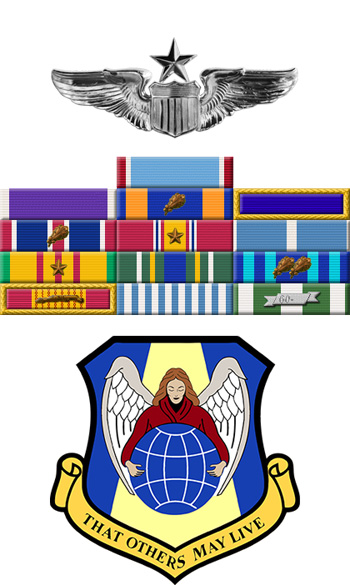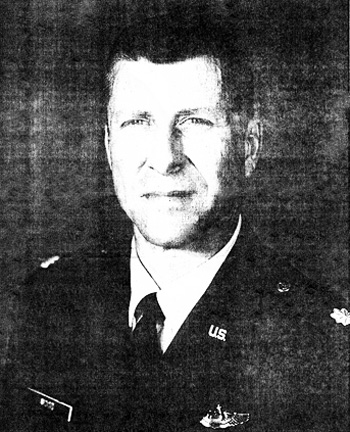
|
Patrick H. Wood |
 |
|||
| Rank, Service | ||||
Colonel O-6, U.S. Air Force |
||||
| Veteran of: | ||||
|
||||
| Tribute: | ||||
Patrick Wood was born on January 23, 1931, in Kansas City, Missouri. He enlisted in the Aviation Cadet Program of the U.S. Air Force on August 18, 1952, and was commissioned a 2d Lt and awarded his pilot wings on September 16, 1953. Lt Wood next completed Helicopter Pilot Training at Gary AFB, Texas, in January 1954, and then served as an H-19 Chickasaw pilot with the 2157th Air Rescue Squadron in South Korea from February 1954 to April 1955. His next assignment was as a helicopter pilot with the 327th Air Base Squadron and on the staff of the 327th Fighter Group at Truax Field, Wisconsin, from April 1955 to March 1962, followed by service on the staff of the 5700th Air Base Group at Albrook AFB, Panama, from March 1962 to May 1965. Maj Wood served with the 1375th and 1371st Mapping & Charting Squadrons at Turner AFB, Georgia, from June 1965 to July 1966, and then completed HH-3E Jolly Green Giant Combat Crew Training in September 1966. His next assignment was as an HH-3 pilot with the 38th Aerospace Rescue & Recovery Squadron at Udorn Royal Thai AFB, Thailand, from September 1966 until he was killed in action during a rescue mission on February 6, 1967. Patrick Wood was officially listed as Missing in Action until after the Vietnam War ended, and was promoted through the ranks to Colonel during that time. His remains were recovered in 2016, and he was buried at Arlington National Cemetery on June 28, 2017. |
||||
|
||||

